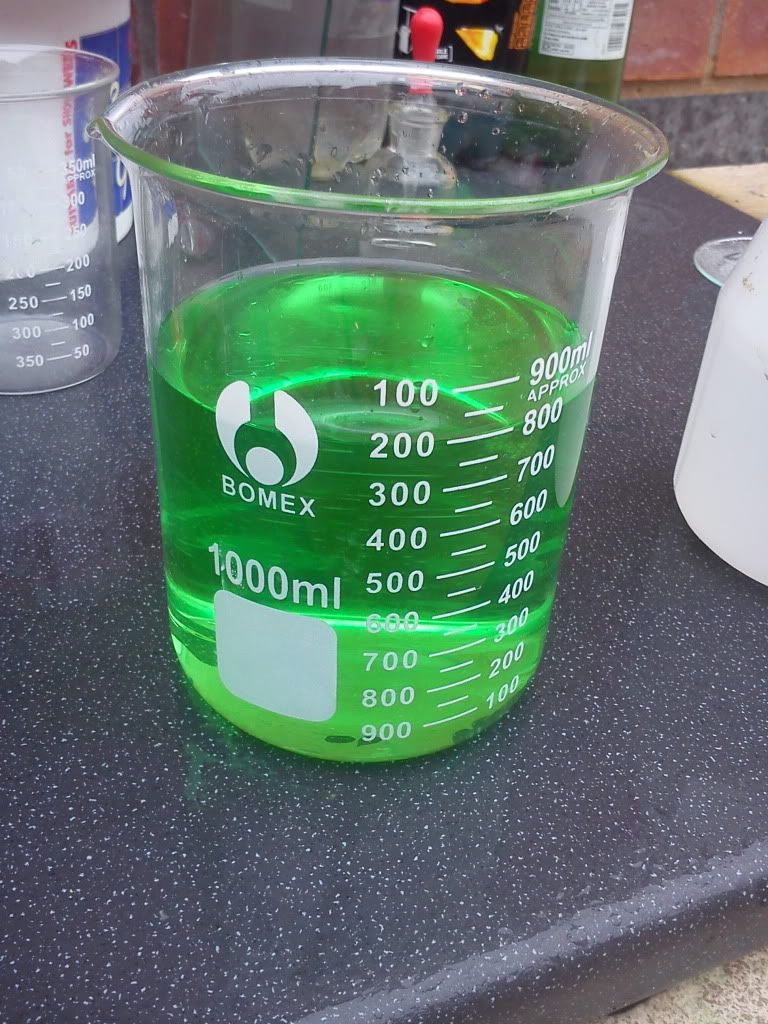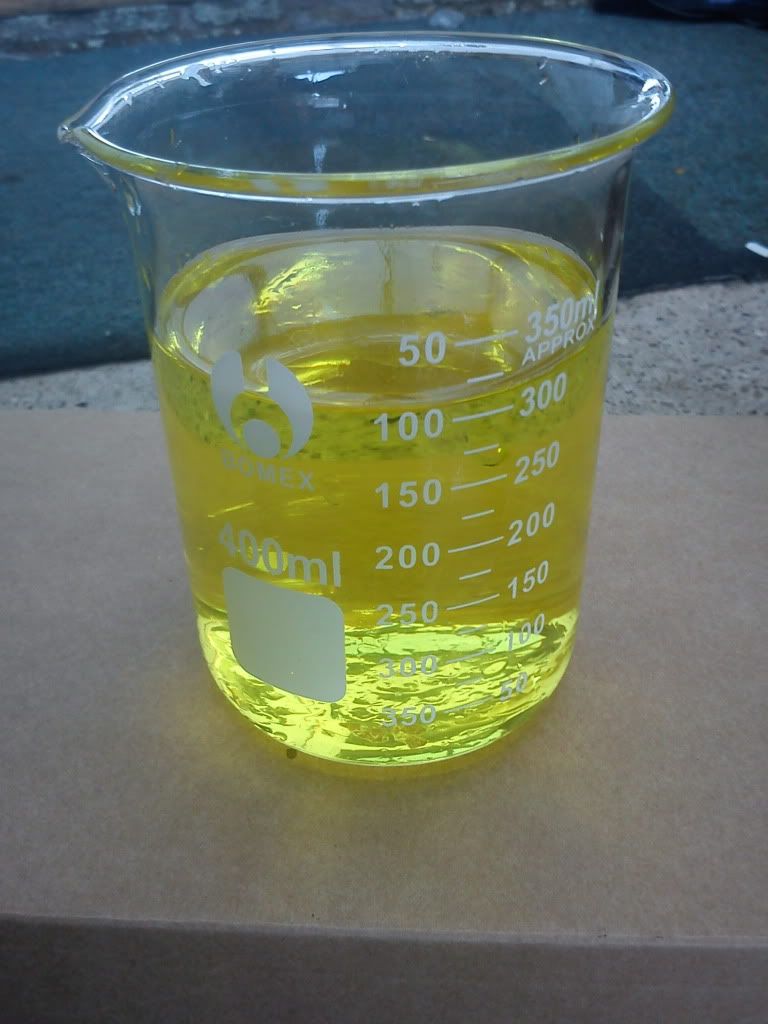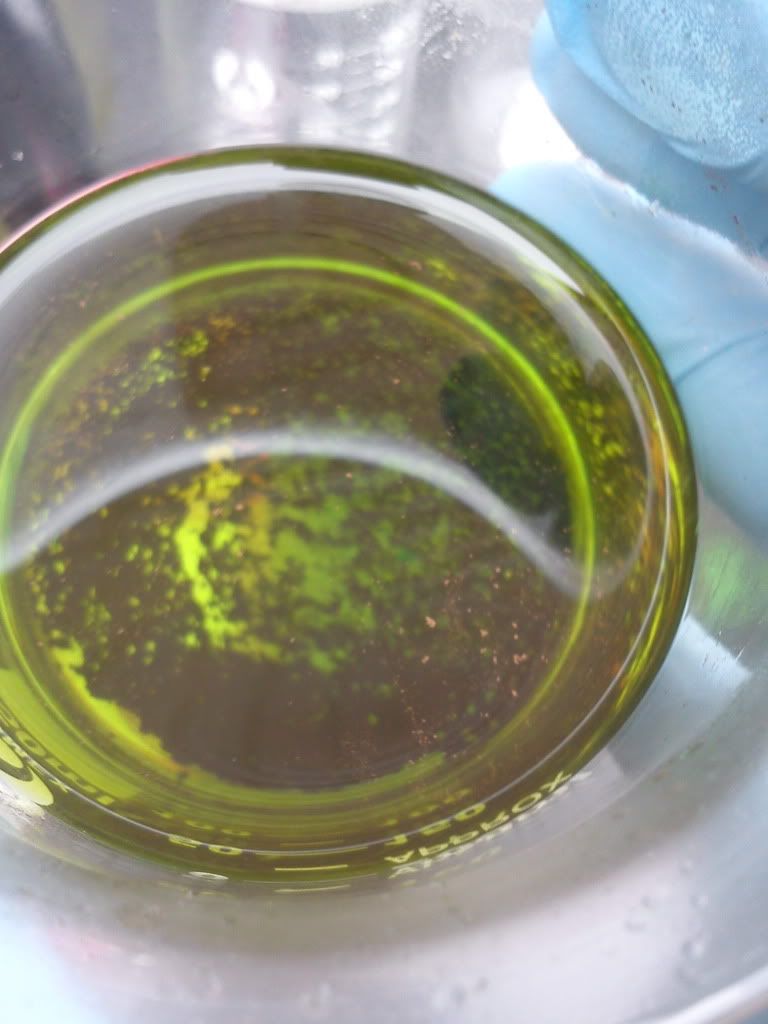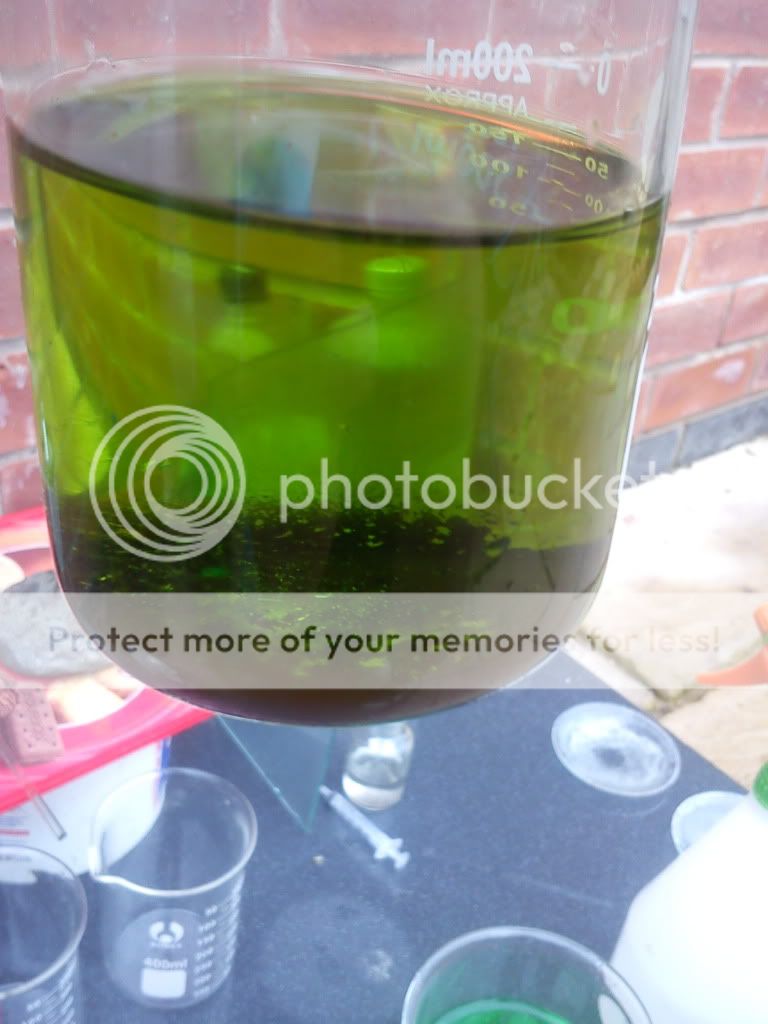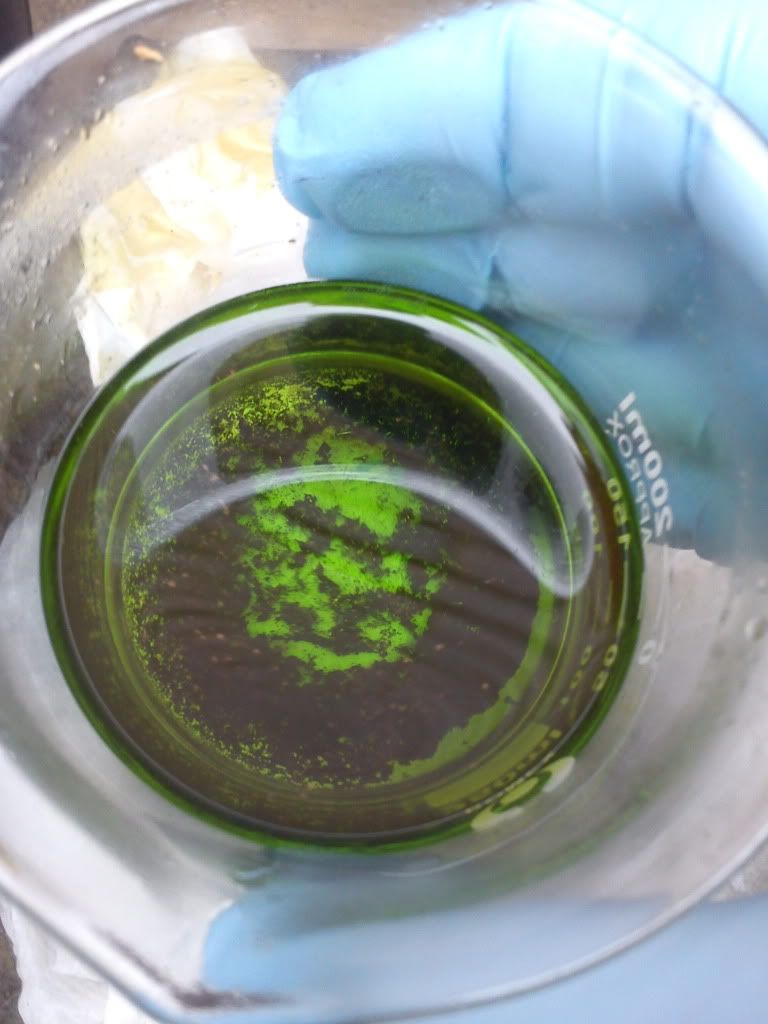rich_2137 said:
Hi Geo
There was another beaker with some foils in but it also had the black powder from the CPU pins, not actual pins but little black deposits, so I desolved the foils using hcl/cl and it went a really dark green but as soon as I added the dark green solution to the yellow one thats when it turned murky brown and when I returned from work it was like it is in the picture :|
Rich
It is my opinion that you are seeing gold. It often comes down quite dark and fine from a dirty solution. If one of your solutions had SO2 introduced, the residual gas (dissolved in water) precipitated the gold from the second solution.
Before jumping to any conclusions, start by testing the solution, to see if gold is still contained within. If not, allow the solution to settle well, then decant, separating the solution from the solids. That's a good start at getting to the gold, even if there's something else included. I would then give the solids a hard boil in HCl, which does wonders for removing contaminants that are soluble. If the solids are gold, you should witness a change of color as it boils, with the solution darkening. Boil for some time, then add a little water. Allow the solids to settle well, then decant. Give a boiling rinse, decant, then do a wash with ammonium hydroxide, followed by another water rinse. Finally, give a last HCl wash and rinse, boiling for some time. If the solution doesn't darken, you can feel confident that you have removed the bulk of the contaminants. What remains, if it's gold, should agglomerate, but there are instances when it does not.
At this point, it is a good idea to re-dissolve the solids, for a second precipitation. That will ensure that you end up with pure gold.
Test everything before discarding. If you suspect that you have silver present, the ammonium hydroxide wash can be introduced to the stock pot, where any dissolved silver will be recovered.
Harold





